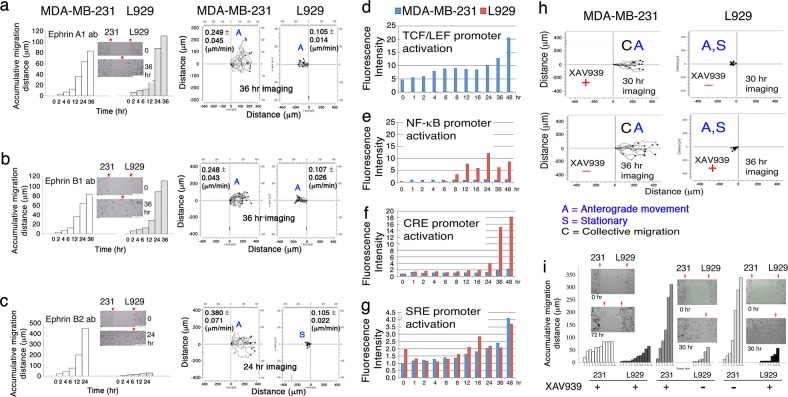Fig. 4. Eph/ephrin signaling and Wnt-dependent TCF/LEF promoter activation cause retrograde migration of MDA-MB-231 upon facing L929.
a, b The coculture of MDA-MB-231 and L929 cells was added antibody (1 μg/mi) against ephrin A1 or B1, followed by time-lapse microscopy. Upon facing each other, MDA-MB-231 underwent collective and anterograde migration. Both the accumulative migration distance and the migrate velocity are shown. The starting points and the final cell merge point are marked (see red arrows). c In contrast, ephrin B2 antibody induced the anterograde migration of MDA-MB-231, along with increased migration velocity and distance. L929 migrated but remained largely in the same location. d MDA-MB-231 and L929 cells were transfected with an indicated promoter vector for 24 h. Time-lapse microscopy was then carried out for the cell migration toward each other. Rapid activation of Wnt/β-catenin-dependent TCF/LEF promoter occurred in MDA-MB-231 in less than 2 h, but not in L929. e, f When MDA-MB-231 moved approaching toward L929 in 12 to 48 h, activation of NF-κB and CRE promoters occurred in L929. g No apparent differences for the activation of SRE promoter in both cells. h, i When MDA-MB-231 or L929 were exposed to Wnt inhibitor XAV939 (10 μM) for 40 min, followed by preparing for time-lapse microscopy. MDA-MB-231 migrated collectively forward with an increased accumulative migration distance and an accelerated migration velocity. In contrast, L929 migration was significantly retarded. When MDA-MB-231 and L929 were treated with XAV939 (10 μM) for 40 min, followed by gently washing, replacing with fresh medium, and then starting time-lapse microscopy. Both cells migrated very slowly in an anterograde manner

